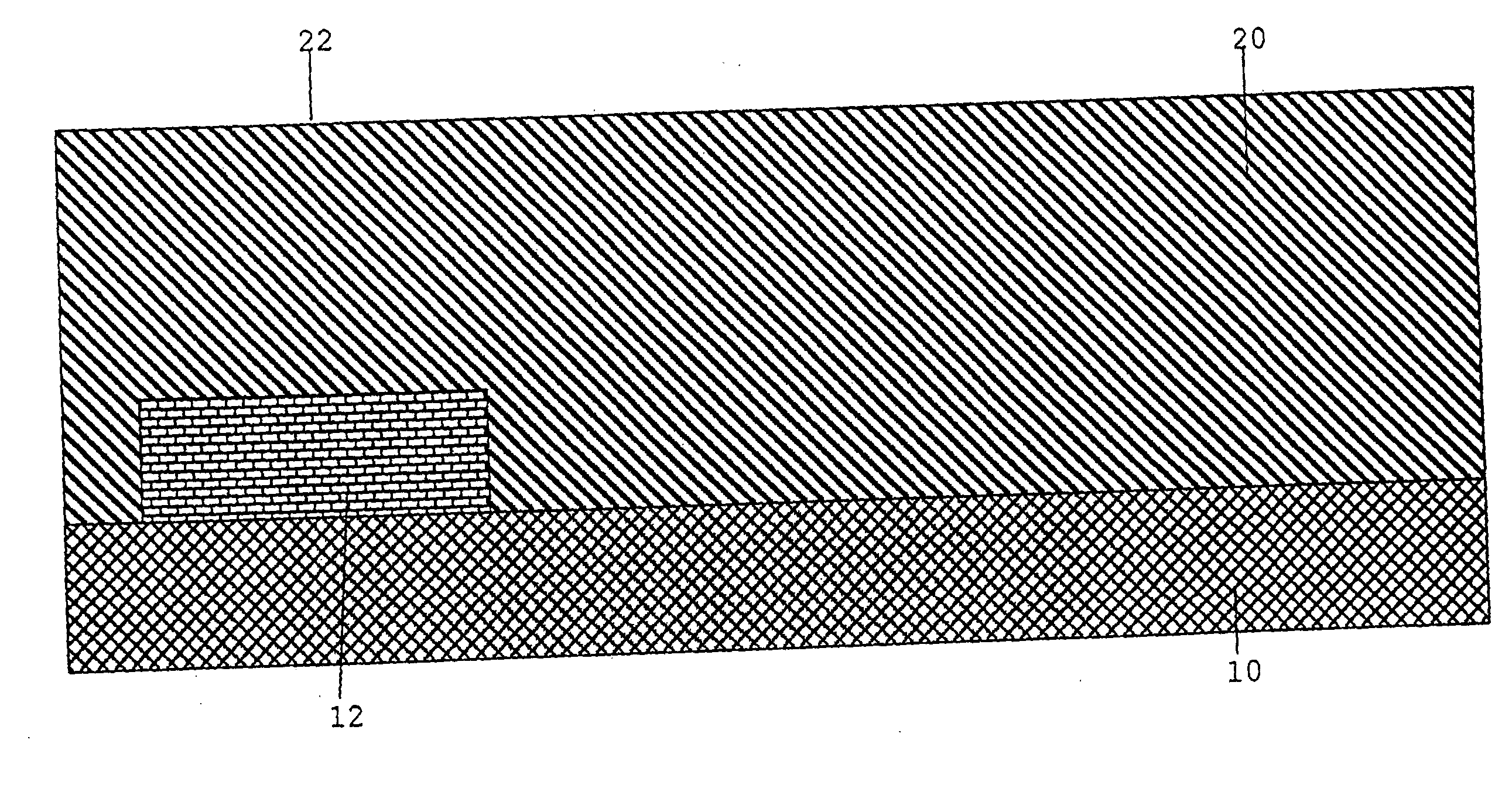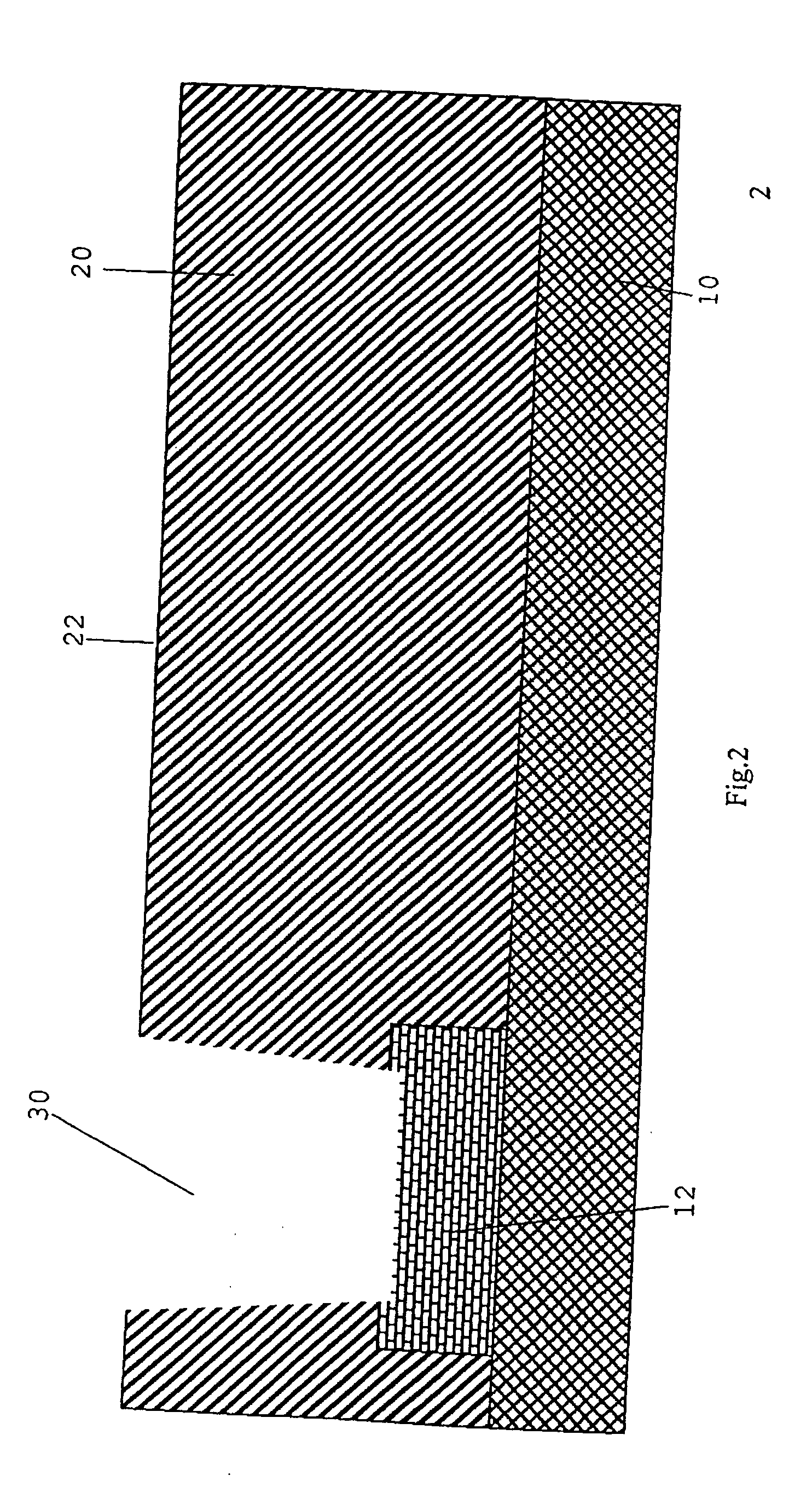Method of producing a capacitor in a dielectric layer
a dielectric layer and capacitor technology, applied in the direction of capacitors, semiconductor devices, electrical equipment, etc., can solve the problems of reducing the absorption properties of anti-reflection coatings, reducing the capacitance of capacitors, and requiring separate lithographic and etching steps, so as to reduce the investment in apparatus and process technology necessary for producing capacitors, reduce the cost, and minimize the effect of outlay
- Summary
- Abstract
- Description
- Claims
- Application Information
AI Technical Summary
Benefits of technology
Problems solved by technology
Method used
Image
Examples
first embodiment
[0050]FIG. 14 to 19 show in the form of schematic vertical sectional views various phases of a production method according to a further alternative embodiment of the present invention. This method differs from the first embodiment insofar as, after the production of conductors 12, 12a on the support layer 10, the first dielectric layer 20 is not produced homogeneously in one step, but spaces 140, 142, 144 between the conductors 12, 12a are first filled with a conformal HDP oxide (HDP=High Density Plasma silane oxide), i.e. an amount of HDP oxide is deposited which is just large enough to essentially fill the spaces 140, 142, 144 between the conductors 12, 12a. A characteristic feature of the HDP oxide is that it grows on all edges with the same thickness, i.e. its planarizing effect is only small. HDP oxide is therefore particularly suitable in the present case, since primarily the spaces 140, 142, 144 between the conductors 12, 12a are to be filled, whereas a planarizing effect is ...
seventh embodiment
[0069] One advantage of the method according to the present invention, which is shown on the basis of FIG. 26 to 30, is that it is also compatible with a very hard second dielectric layer 70 which cannot easily be removed and penetrated, respectively, in a polishing or planarizing step. On the other hand, the second dielectric layer 70 represents in this case a reliable stop layer for the second planarizing step.
[0070] In all embodiments, the first dielectric layer 20 can be a first layer bordering directly on a component layer of a semiconductor structure, the support layer 10 representing the component layer and the via hole 30 reaching preferably directly down to a component in the component layer 10, i.e. down to a contact of the component, instead of reaching down to the conductor 12. However, the present invention may just as well be used for producing a capacitor in a dielectric layer 20 spaced from a component layer of a semiconductor structure; the first dielectric layer 20...
PUM
 Login to View More
Login to View More Abstract
Description
Claims
Application Information
 Login to View More
Login to View More - R&D
- Intellectual Property
- Life Sciences
- Materials
- Tech Scout
- Unparalleled Data Quality
- Higher Quality Content
- 60% Fewer Hallucinations
Browse by: Latest US Patents, China's latest patents, Technical Efficacy Thesaurus, Application Domain, Technology Topic, Popular Technical Reports.
© 2025 PatSnap. All rights reserved.Legal|Privacy policy|Modern Slavery Act Transparency Statement|Sitemap|About US| Contact US: help@patsnap.com



